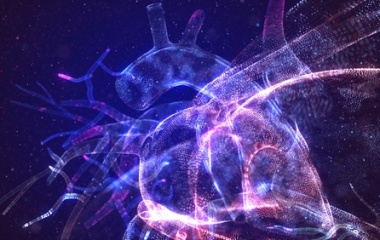
Symbols play an important part in helping to define who we are. Our clothing, for example, is often symbolic of the social milieu with which we identify. Corporate logos help to create a business image and flags of a nation symbolize its essence. Not surprisingly, our biblical commentaries often interpreted the text in symbolic fashion[1].
Nowhere is this more evident than in the interpretations regarding the construction of the Mishkan. The detail upon detail described in the Torah led the commentaries to find symbolic meaning. It was hard to imagine that the Torah would spend so much detail if all it was telling us was the architectural make-up of the Mishkan. While we can readily understand the basic (non-symbolic) meaning of such items as the Aron which housed the tablets or the menorah or the mizbeach, altar, at least one of the key items in the Mishkan seems to defy comprehension.
"Make two golden cherubs hammering them out from the two ends of the cover...The cherubs shall spread their wings upward so that their wings shield the cover. The cherubs shall face one another but their faces shall also be inclined downward toward the cover" (Shemot 25:18-20). Why did G-d command that the image of two children shall adorn the ark? Was this not a violation of the second commandment ordering us not to make graven images?
While the cherubim in another context would be idolatry, in the context of the Mishkan they were integral to our service of G-d. The Torah is (more than) hinting that there is a fine line between worship of G-d and idolatry, between proper service of G-d and its opposite.
It is noteworthy that the term used to describe idolatry is avodah zara, literally strange service. Avodah, service is one of the three pillars - along with Torah and gemillut chasadim - on which the world stands (Pirkei Avot 1:2). Zara comes from the root zar meaning strange. Idolatry is service of G-d that has just lost its proper focus. It is service, it is just strange service. But that makes all the difference.
As the Rambam (Hilchot Avodat Kochavim 1:1) notes, idolatry began as an unfortunate mistake – one rooted in a genuine and beautiful desire to worship G-d[2]. Sad as it is, mistakes can have terrible consequences. A fine line crossed can be dangerous indeed. Worshipping G-d is something for which the tolerance for mistakes is low. Yet well-meaning avodah zara is surely better than the worship of money, power, honour or cultural icons.
The cherubim themselves seem to point to the proper direction for service of G-d. There were two of them, in the image of children, one male, one female facing downwards with their wings pointing upwards. We must strive to reach the heavens so that we can make earth a better place. We are partners with G-d and our love of G-d must parallel His love of us. “Rav Ketina said: When the Jewish people would ascend for the pilgrimage festivals, they would roll up the curtain for them and show them the cherubs, which were clinging to one another, and say to them: See how you are beloved before God, like the love of a male and female (Yoma 54b). It is through marriage that one can reach higher levels of Divine service. One can achieve more with a partner than alone.
Service of G-d requires that we take on some of the characteristics of children. The purity, innocence, faith, that adults seem too sophisticated for, is the hallmark of children and the path to reach G-d. The corrosion of the real world, which shatters the illusions of our youth, must not harden our relationship to our Master. Children tend to have a natural love of ritual; it is so sad when adults try to squelch that natural yearning for G-d. Perhaps we are all a little too sophisticated living as we do in such a "modern" world. We must bring back our youthfulness.
While emotionally we must be children in the service of G-d, intellectually we must be adults[3]. Our understanding of Torah must not be allowed to remain on a grade two or even on a grade 12 level. Proper Torah study requires sophistication, nuance, in-depth analysis, creative thinking, intellectual honesty and more. Too many have a wonderful general education, whereas their Jewish education remains on an elementary level. The cherubim have their faces looking towards the Aron with their wings pointing heavenly. If we correctly understand and apply Torah, properly combining the innocence of children and the sophistication of adults, then we can rest assured that the sky's the limit.
[1] The questions of how much of the Torah may be interpreted symbolically as opposed to more literally often led to fierce debates. Some went so far as to interpret the notion of putting a sign on one’s arms in symbolic fashion. In a related notion the Rambam understood the appearance of the three angels to Avraham or Yaakov’s fight with the angel as dreams and not actual live events.
[2] The Meiri – unlike the Rambam – saw idolatry as a moral, not a theological, sin. Worship of G-d means acting in a moral fashion and hence those who may worship other gods but lead a moral life are not to be considered idolaters.
[3] Rav Soloveitchik beautifully explains that while only “children” can pray, learning can done only by “adults” (see here).



